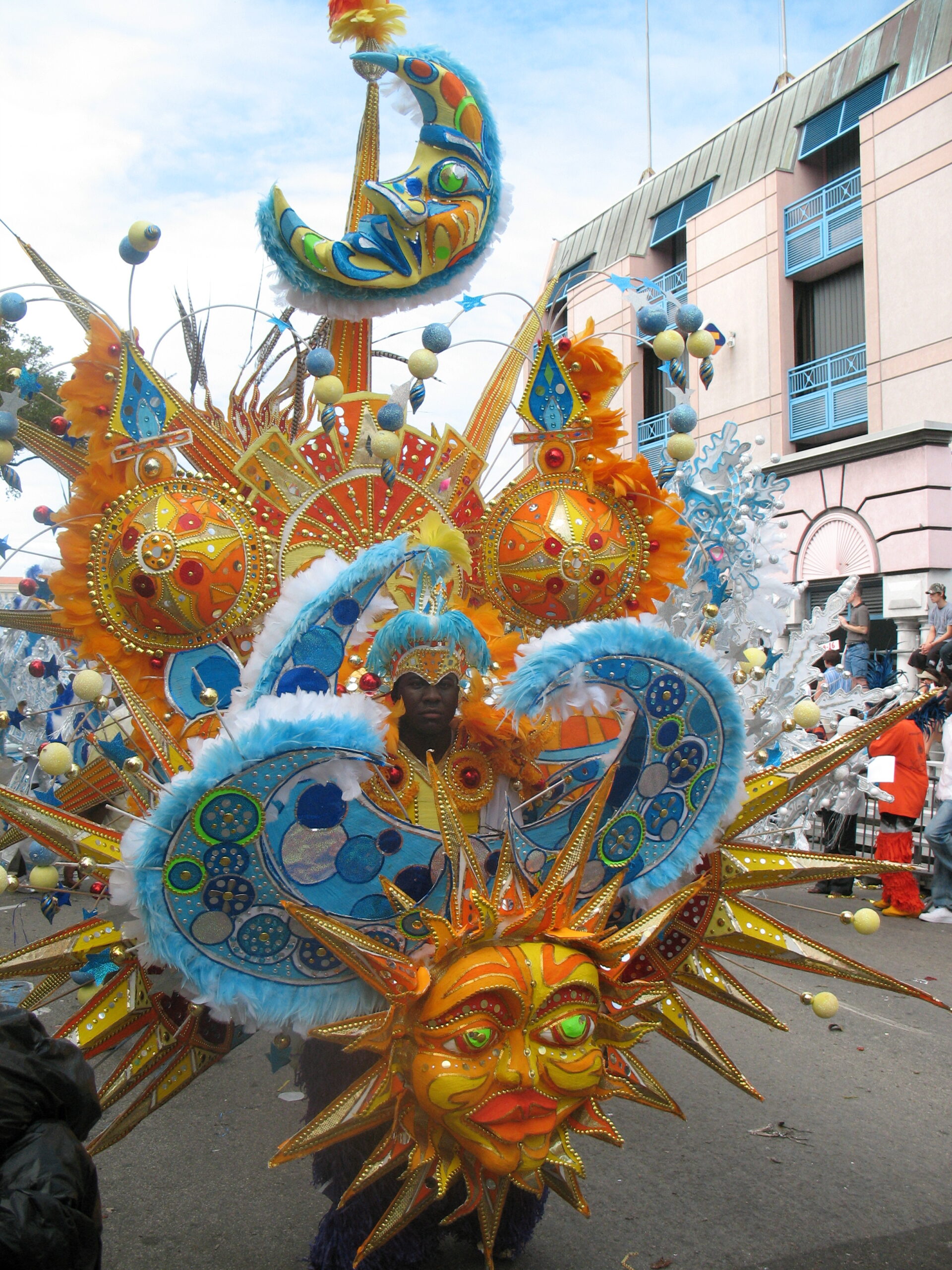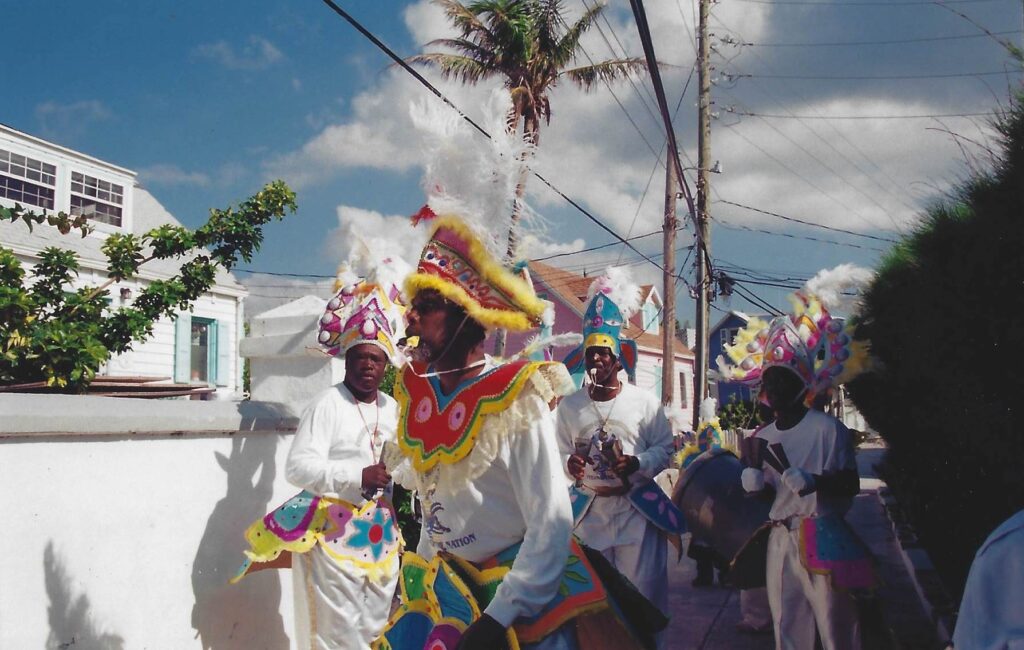
RealJunkanoo – CC BY-SA 3.0,I can’t overstate the artistic influence of Junkanoo on not just myself, but on practically every Bahamian artist. It is the fire from which we are forged, the blazing root of the culture, one of the things that creates a coherent identity for the inhabitants of an archipelago nation. This costume carnival traditionally happens twice a year, once on Boxing Day and once on my birthday, New Years’ Day. Participants from different groups with names like the Saxons or the Valley Boys spend all year making elaborate costumes out of scrap cardboard and crepe paper, and then spend just those two nights “rushing”—dancing in the streets for eight hours or more, finishing up at dawn, and—at least when I was a child—discarding the costumes in the gutter.
The costumes are often gigantic, heavy, and meant to be worn by a single person. I remember ones that took up the entire width of the street. You couldn’t take in all the detail in one go as the rusher danced past—you had to wait for him to go around another lap of the street route, and maybe another, to really get an idea. Rushing takes a lot of strength and stamina. Dancing for eight hours straight is a trance state activity.
When I was in 4th Grade, we went on a class trip to the new Junkanoo Museum. At the time most of the costumes were still being thrown away at the end of the parade, but the man who had started this little museum was collecting as many of the good ones as he could before the garbage men came to clear them out of the gutters. He showed us how they made the costumes, cutting pieces from old cardboard boxes and gluing them together to make forms you could wear, and then covering them with strips of fringed crepe paper he was cutting with a set of tin-snips.
I wanted my own piece of Junkanoo after that. The next year, we got up early (I was too young to stay up all night at the parade) and drove downtown to see what we could pick up before the trucks came to clear the gutters. I got a big purple and orange belt piece, made like two turtle shells stuck together, and I was so pleased with this. But when we got it home I realized…that somehow, it was dead.
It was interesting to see how it had been made, and it inspired me to try my own hand at building with cardboard and other “trash” items later on. I appreciated being able to see the engineering on it—but it was like the little empty exoskeletons of cicadas I’d find hanging on the bark of gum elemi trees: cool in its way, but nothing really interesting left inside.
This feeling that art needs to be participatory, that it needs to involve people and create identity for them, and that sometimes a museum is just preserving the dead bits left over after art has moved on—that never left me.

Trent and I were honored to have the local Abaco Junkanoo troupe perform at our wedding and “rush” us from St. James’s church to the Harbour’s Edge restaurant for our reception! Special thanks to troupe leader Churton Toote for making the day extra special.